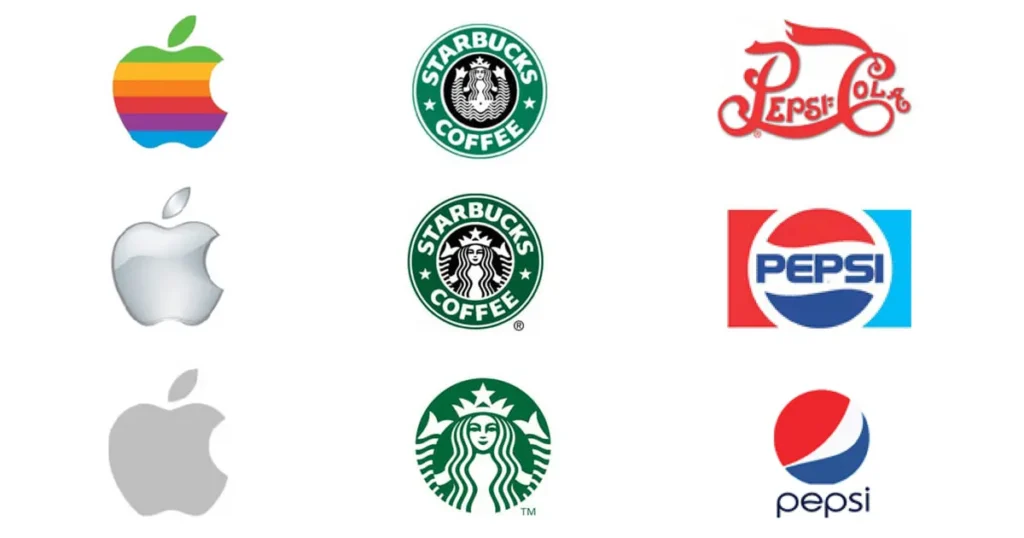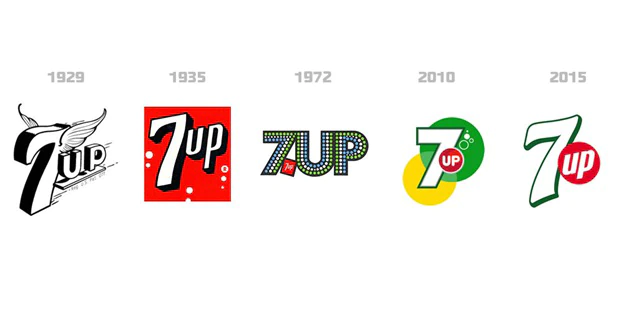Company rebranding is a strategic process that can breathe new life into a business, inspire employees, gain new clients, and leave a lasting impression on the industry. To successfully navigate the rebranding process, companies must understand the need for rebranding, set specific goals, assess the current brand image, assess brand identity and values, align with the vision and mission, better reflect the needs and preferences of the target audience, and analyze the market and competitive landscape. By addressing these questions, companies can effectively navigate the rebranding process and leave a lasting impression on their industry.

20 Questions to Ask When Doing a Company Rebrand
The mere mention of the words “company rebrand” can send shivers down the spine of even the most seasoned executive. While this is not a journey to be taken lightly, by fully embracing the rebranding process, companies can breathe new life into their business, inspire employees, gain new clients, and leave a lasting impression on their industry.
As a branding strategist, I have helped hundreds of companies navigate the treacherous waters of rebranding. It unquestionably requires a strategic approach and keen sense of self-awareness about the reality of the company’s rebranding effort. It also requires an understanding of what it will take to get the job done.
Where do we even start? How will this all get done? Who is going to make it happen? How much is it all going to cost? These are the common questions clients bring up when considering a company rebrand. Beyond these essential items, there are 20 specific questions you need to ask yourself before embarking on the wild ride of rebranding.
Understanding the Need for Rebranding
1. What has prompted your rebrand?
Before you start tossing around ideas for a new logo or color scheme, take a moment to reflect on the underlying reasons for your rebranding efforts. Has your company undergone significant growth or change? Are you looking to target a new audience or reposition yourself in the market? Understanding the driving force behind your rebrand will help you develop a focused and effective strategy.
2. What are the specific goals we aim to achieve through rebranding?
As Yogi Berra famously said “If you don’t know where you’re going, you’ll end up somewhere else.” Clarity is vital when it comes to rebranding, requiring a focused vision of what you aim to achieve. Are you looking to increase brand awareness, differentiate yourself from competitors, or signal a new direction for your company? Setting specific, measurable goals will serve as your guiding light throughout the company rebranding process.
3. How does the current brand image differ from the desired brand perception?
Before you can move forward, you must look honestly at where you stand. Conduct a thorough brand audit to assess your existing brand equity, market position, and audience perception. This will help you identify areas for improvement and determine the scope of your rebrand.

Assessing Brand Identity and Values
4. What core values and attributes do we want the new brand to embody?
Your brand is more than just a log and a clever line; it reflects your company’s core values, commitments, and personality. Take the time to articulate the qualities you want to be associated with as they will serve as the foundation for your new brand identity.
5. How well do our current brand identity and values align with our vision and mission?
Consistency is a no-brainer when it comes to your branding. Consider whether your current brand identity and values align with your long-term goals and aspirations. If there is a disconnect, focus your rebranding efforts on bridging that gap and creating a cohesive brand narrative.

6. In what ways can our brand better reflect the needs and preferences of our target audience?
The bottom line is that your brand strategy exists to connect with your customers. Conduct market research to understand their needs, preferences, and pain points. Use this information to shape your brand messaging and offerings in a way that resonates with your target audience and builds lasting relationships.
Analyzing the Market and Competitive Landscape
7. How has our market or industry evolved since our last branding?
Step back and assess how your market may have changed since your last branding effort. Have new technologies emerged (AI, anyone)? Have consumer behaviors shifted (sustainability)? Has the talent pool for employees changed (Hello Gen Z). Understanding these dynamics will help you position your brand for success in the current market landscape.

8. What are the current trends and future predictions for our industry?
A successful rebrand not only considers the present but also anticipates the future, including identifying emerging trends, potential disruptors, and growth opportunities. This foresight will enable you to create a brand that is resilient, adaptable, and ready to tackle whatever challenges come your way.
9. How do our competitors position themselves, and what can we learn from them?
By analyzing your competitor’s branding strategies and messaging, you can identify their strengths and weaknesses and consider how to differentiate your existing brand equity to stand out in a crowded marketplace. Imitation may be the sincerest form of flattery, but differentiation is the key to success.
Engaging Stakeholders and Your Audience
10. How do we plan to involve our employees, customers, and partners in the company rebranding process?
Rebranding is not a solo or siloed effort; it requires the support and engagement of your entire organization from finance to HR. Involve your employees, partners, and investors in your rebranding efforts to gather their insights and secure their buy-in. This collaborative approach will ensure that your new brand identity resonates with all stakeholders and fosters a sense of ownership and pride.
11. What feedback have we received from stakeholders about our current brand, and how can we address it?
Conduct surveys, focus groups, and interviews to gather candid opinions on your current brand strategy and future expectations. Use this feedback to inform your strategy, demonstrate your commitment to stakeholder input, and build stronger relationships.
12. How can we ensure our rebranded identity resonates with our existing and potential customers?
Your rebrand should cater to your existing customer base and attract new prospects. Create market segmentation and develop buyer personas to understand different customer groups’ unique needs and preferences. Tailor your rebranding efforts to appeal to these diverse segments while maintaining a consistent and cohesive brand identity.
Planning for Implementation and Measuring Success
13. What are the key elements of our brand that need to be redesigned?
(e.g. logo, website, marketing materials). A rebrand is more than just a new coat of paint; it requires a comprehensive update of all your brand strategy assets. Identify the key elements that need redesigning and develop a detailed plan to ensure a cohesive and consistent implementation across all touch points.
14. How will we communicate the rebrand internally and externally?
Communication is critical to the success of your rebranding efforts. Develop a clear and compelling communication plan to announce and explain your rebrand to all stakeholders, both internal and external. Use a variety of channels, such as email, social media, press releases, and events, to ensure maximum reach and engagement.
15. What is the timeline for the company rebranding process, and what are the key milestones?
Rome wasn’t built in a day, and neither is a successful rebrand. Establish a realistic timeline that considers the scope of your rebranding efforts and the resources available. Break the process into key milestones, such as research and planning, design and development, internal roll-out, and external launch. Set clear deadlines and assign responsibilities to keep your team on track and ensure a smooth implementation.

Budgeting and Resource Allocation
16. What is the estimated budget for the rebranding project?
Ah, the million-dollar question – literally. Determining the budget for your rebranding project is crucial, as it will dictate the scope and scale of your efforts. If you are thinking, “Can’t we just wing it and see where the journey takes us?” Trust me, as tempting as that may sound, it’s a recipe for financial disaster.
17. How will resources be allocated across different aspects of the rebranding?
Rebranding can be a significant investment, so it requires developing a detailed budget for all aspects of the rebranding process, from research and design to brand strategy development and implementation. Prioritize your spending based on the strategic importance and impact of each element.
18. What are the potential financial risks, and how can we mitigate them?
One of the most significant financial risks of rebranding is the potential impact on your existing brand equity. If your current brand has a strong, positive reputation in the market, a poorly executed rebrand could erode that goodwill and lead to losing customers and revenue. To mitigate this risk, conduct thorough research and testing to ensure your new brand identity resonates with your target audience and aligns with their values and expectations.
Measuring Success and Impact
19. What are the key performance indicators (KPIs) for the rebrand?
A rebrand is only as successful as its impact on your business. Establish clear metrics and KPIs to assess the effectiveness of your rebranding efforts, such as existing brand equity, brand awareness, customer loyalty, market share, website traffic, and sales revenue. Set specific targets for each metric and regularly track and analyze your progress to ensure that your rebrand is delivering the desired results.

20. How will we gather and analyze feedback post-rebrand to ensure continuous improvement?
Your rebranding journey doesn’t end with the launch; it’s an ongoing process of refinement and improvement. Continuously gather feedback from your customers, employees, and partners to understand how your new brand is being perceived and experienced. Use this feedback to make necessary adjustments, fine-tune your strategy, and ensure that your future and existing brand remains relevant and resonates over time.
Company rebranding is not for the faint of heart, but for the bold and the visionary. It requires a strategic mindset, a willingness to ask tough questions, and a commitment to continuous improvement. By carefully considering the questions outlined in this guide, you can develop a comprehensive rebranding strategy that aligns with your core values, engages your stakeholders, and positions your company for long-term success.
Remember, your brand is your promise to your customers, employees, and the world. It reflects who you are, what you stand for, and the impact you seek to make. So, approach your rebranding journey with courage, creativity, and a healthy dose of humor, and watch as your company transforms before your very eyes.

As a final note, don’t hesitate to seek the guidance and support of experienced branding professionals who can help you navigate the complexities of the rebranding process. With the right partner, you can create a brand that stands out and meets the test of time.
How SMG Helps Our Clients to Meet These Challenges
For over 20 years, I have helped CEOs accomplish their business rebranding goals. Much of what I’ve learned about this topic comes from up close and in the fieldwork consulting work with leaders from Inc. 5000 companies, mid-cap companies, and startups.
As an author and columnist for Inc.com, I constantly search for studies, surveys, real-world examples, and techniques to help my clients achieve stronger rebrands that keep them on trend, on brand, and up to date with the marketplace.
If, after reading this article, you find yourself thinking, “Yes, I get it. I need to hire a rebranding agency to help me with this,” but are in a quandary about how to get there, consider booking an initial consultation with me at no charge.
I will review your current brand before our call and give you at least one or two specific ideas you can use to rebrand: no sales, just helpful information and insight. You can book a session with me here.
